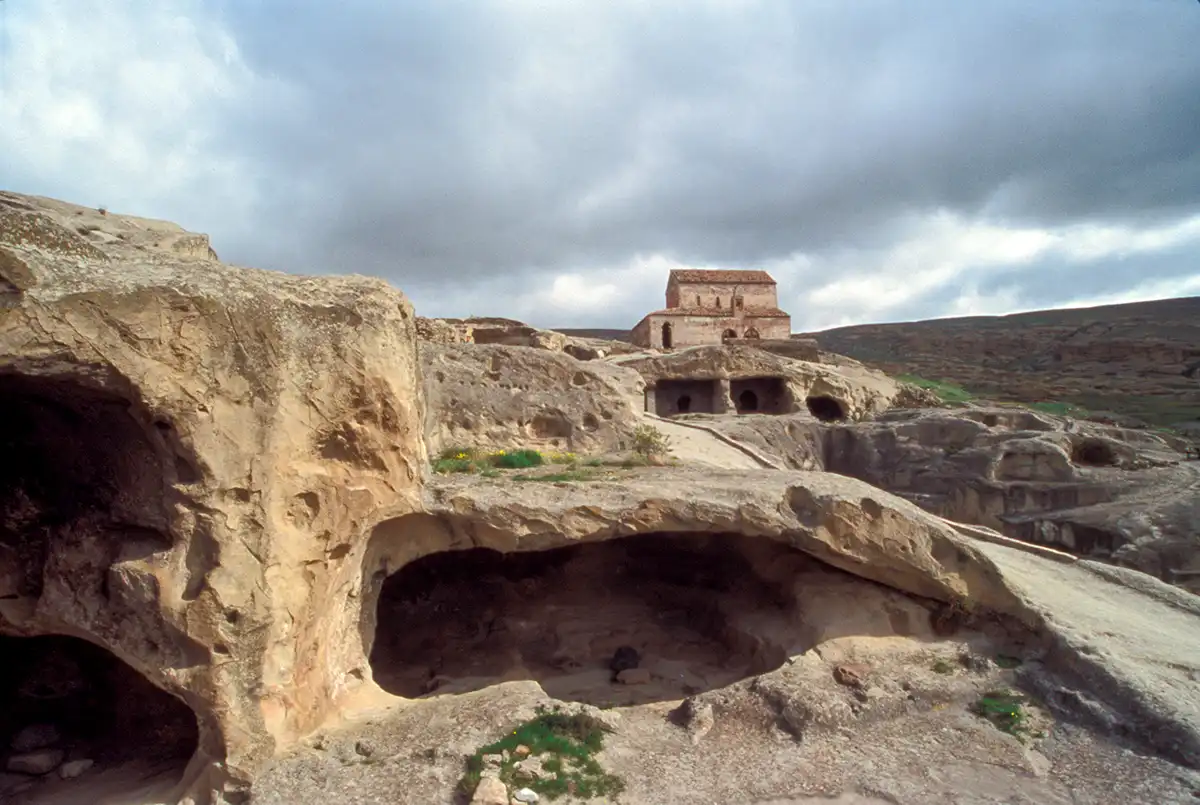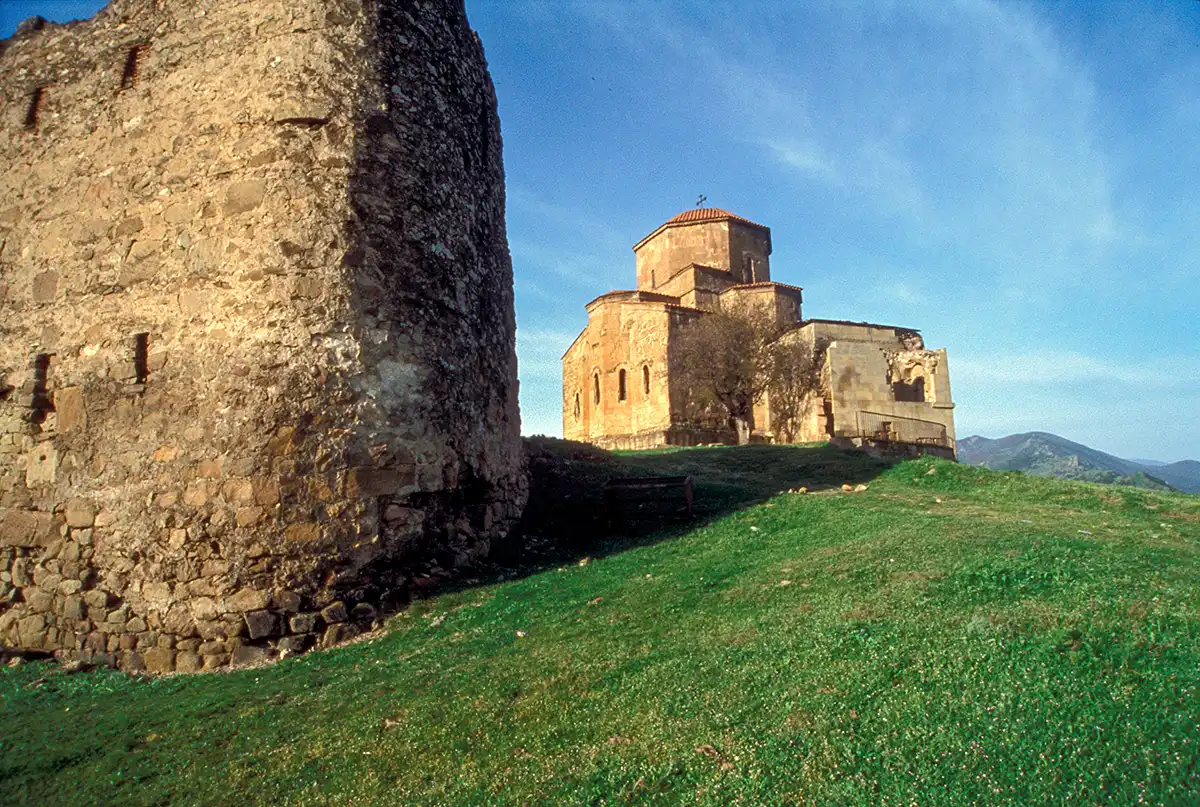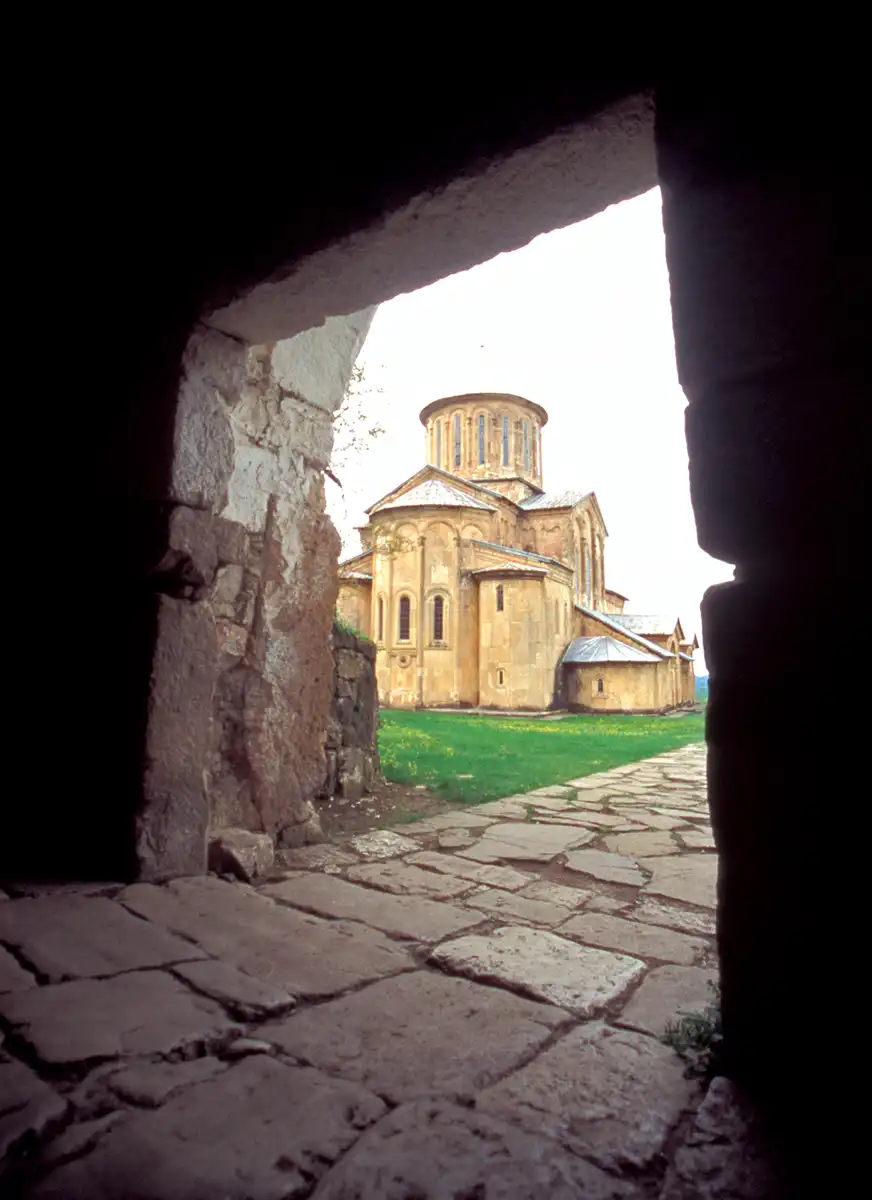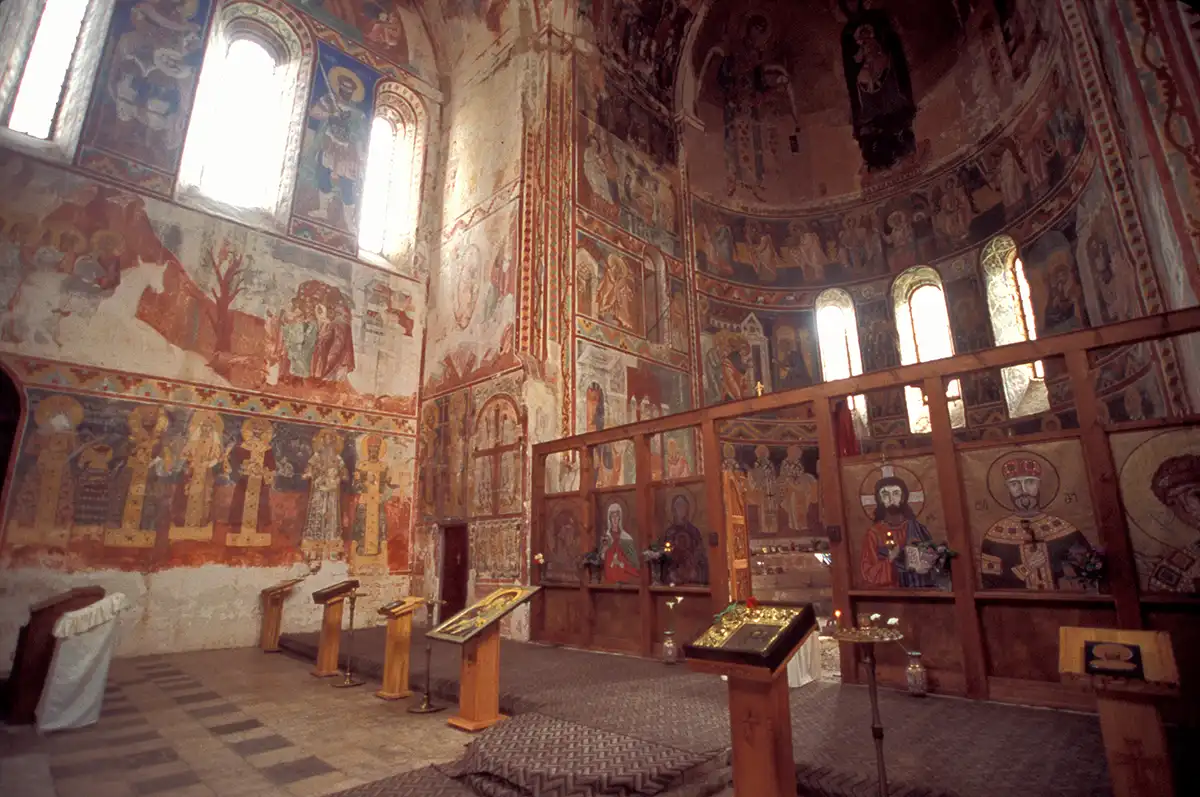Sacred Sites of Georgia
Uplistsikhe
Ten kilometers east of the village of Gori and two kilometers from a portion of the ancient Silk Road, the cave city of Uplistsikhe (pronounced oop-lis-si-hee) was a functioning city by late Bronze Age times of 1000 BC. Severe erosion has damaged the site, making archaeological excavation difficult, and it is probable that the many naturally occurring caves had been inhabited at a far earlier age. Before the introduction of Christianity to Georgia in the 4th century, Uplistsikhe was a prominent pagan holy place, and the 9th-century brick church of Uplistulis Eklesia (Prince's Church) was built directly over a pagan sun temple. During the early Middle Ages, when the city was at its peak of development, there was a population of perhaps 20,000 living in the 700 caves (of which only 150 remain). In the 13th century, Mongol invasions devastated the city, and a series of earthquakes contributed to its eventual abandonment.
Jvari(Dzhvari)
High on a hill overlooking the village and churches of Mtskheta, the church of Dzhvari is one of the most significant examples of early Georgian architecture and a symbol of the country. Both Dzhvari and Mtskheta churches are situated at previously pagan sacred places, dedicated to Armazi, the Georgian version of the Zoroastrian fire god, and there are also traces of even more ancient Hittite and Sumerian cult temples. The region has been continuously inhabited for over 3000 years and, from the 4th century BC to the 5th century AD, was the capital of Georgia. In 65 BC, Pompey led a Roman army through the region, and the town was heavily damaged. In the 4th century AD, Christianity was brought to Mtskheta (pronounced mts-heta) by a young woman later canonized as St. Nino. Christianity became the state religion of Georgia in 337 AD, making it the world's second Christian nation. By the 6th century, nearby Tbilisi had become the capital, but Mtskheta and Dzhvari remained the religious center and a place of pilgrimage.
Gelati
Situated on a wooded hill 11 kilometers northeast of Kutaisi, the beautiful monastery and academy of Gelati was founded by King David the Builder in 1106. The academy, the original building still standing, drew scholars from throughout Eastern Europe and was a great center of neo-Platonist metaphysical philosophy between the 12th and 15th centuries.
The Cathedral of the Virgin, completed in 1125, received additions in the 13th and 14th centuries. The church's interior is filled with light from the large windows, and many colorful frescos grace the walls. The pride of the church and one of Georgia's greatest works of art is an extraordinary mosaic composed of 2.5 million pieces of stone. Created in the 1130s, it features the Virgin and Child with the Archangels Michael and Gabriel. Outside the church, to the southwest, is a sacred spring that is known to have been a pagan holy place before the arrival of Christianity. Gelati was ravaged by the Ottoman Turks in 1510 and further damaged by the Lezghians in 1579, but King Bagrat III subsequently restored the church and monastery. Russia annexed Georgia in 1801, and while Gelati lost all royal patronage from this time forward, pilgrims continued to visit the sacred place. In 1922, the Communists closed the monastery, and pilgrimages were forbidden. The church was reconsecrated in 1988 and has again become a favorite place of pilgrimage for the Georgian people.
- Motsameta monastery near Kutaisi
- Bagrati monastery near Kutaisi
- Vani temple city on Sulori River
- Medieval cave city of Vardzia
- 7th century church of Ateni Sioni, near Gori

Martin Gray is a cultural anthropologist, writer and photographer specializing in the study of pilgrimage traditions and sacred sites around the world. During a 40 year period he has visited more than 2000 pilgrimage places in 160 countries. The World Pilgrimage Guide at sacredsites.com is the most comprehensive source of information on this subject.







